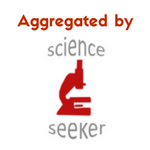For some, it happens overnight. For others, it takes weeks of nurturing and coaxing. But most of them get there in the end. A quick glance at the calendar tells you exactly what I mean: Movember is back —the one month of the year when upper lips everywhere decide to come out of hibernation.
It’s been six years since I last blogged about Movember, but a request from my nephew Max —proud owner of a fledgling moustache and an even stronger commitment to men’s physical and mental health—prompted me to take a fresh look at what progress has been made in prostate and testicular cancer research.
Although “November = Movember” is permanently ingrained in my mind, the all-powerful algorithms have been curiously silent about it in my feeds this year (a situation that is certainly about to correct itself). And because moustaches are already having a mainstream cultural moment – with celebrities like Benson Boone, Pedro Pascal, Jacob Elordi and Bad Bunny ensuring the look never left – I haven’t been suspicious when I’ve spotted friends and colleagues sprouting fresh facial foliage, because, well, it’s already everywhere.
But that raises an important question: Is Movember still making a difference?
Since launching in Melbourne, Australia, in 2003, Movember has raised almost US$1 billion worldwide. It has funded over 1,320 projects across 20 countries.
According to the Movember Foundation: “A growing number of men – around 10.8M globally – are facing life with a prostate cancer diagnosis. Globally, testicular cancer is the most common cancer among young men. And across the world, one man dies by suicide every minute of every day, with males accounting for 69% of all suicides.”
In Canada, Movember has raised over CA$41 million. Movember Canada has contributed to 31 prostate cancer projects, one testicular cancer project and 33 mental health and suicide-prevention projects.
Prostate cancer and the promise of regenerative medicine
Prostate cancer, caught early, has one of the highest survival rates among cancers. However, once it spreads to other parts of the body, it is much more challenging to treat, and survival rates decrease. Prostate cancer is typically treated like other forms of cancer: with surgery, radiation therapy and medicine, which can include chemotherapy.
So where do regenerative medicine and advanced biotechnologies fit in?
CAR T therapy, CRISPR and 3D bioprinting
Results from a first-in-human Phase I clinical trial of chimeric antigen receptor (CAR) T-cell therapy (read what this means here) for advanced prostate cancer “showed promise, with minimal side effects.” The City of Hope study was published in Nature Medicine.
Regular readers of Signals will be aware that CAR T therapies have been approved and shown success in certain types of blood cancers. However, prostate cancer is a solid tumour cancer, and these have proven more difficult to treat for a number of reasons. This study is exciting and suggests that a targeted cell therapy could help overcome immune evasion.
Another avenue is using CRISPR/CAS 9 to edit genes in prostate cancer cells. One preclinical study showed it was able to inhibit the proliferation of prostate cancer cells, opening potential pathways for targeted treatments that disrupt tumour-driving genes.
The 3D bioprinting world is also making helpful progress. Prostate cancer stem cells and their niche microenvironment are being 3D bioprinted to create more realistic tumour models that can identify vulnerabilities in the cancer stem cell compartment (responsible for initiating and maintaining tumour growth) and test therapies – including those using gene therapies. The result is the ability to design more effective interventions. This work, highlighted in the World Journal of Clinical Oncology, is expanding our ability to study prostate cancer with unprecedented precision.
What about testicular cancer?
Regenerative medicine approaches in testicular cancer appear to be less developed compared to prostate cancer, but other treatments exist. Fortunately, testicular cancer is already one of the most treatable cancers, with more than 90 per cent of patients getting cured. Like with prostate cancer, early detection is crucial for successful outcomes.
Reaching patients
It is interesting to note that Movember recently announced $4.9 million in new grants aimed at reducing inequities in prostate cancer care, with the highest amount of funding – $2.1 million – going to Canadian projects.
This shift matters. Precision medicine and emerging therapies only make a difference when people can access them. Funding equity-focused initiatives ensures that advances in regenerative medicine and cancer treatment reach the communities that need them most.
Movember isn’t just about growing moustaches. It’s about growing awareness, growing research funding, and occasionally growing something on your upper lip that makes small children ask, “Is that on purpose?”
I already couldn’t get through November without thinking of Movember. Now this Celine Dion song has been permanently altered for me too. Watch if you dare.
Stacey Johnson
Latest posts by Stacey Johnson (see all)
- Right Turn: Beyond the ’stache: The science, the progress, the promise - November 26, 2025
- Right Turn: Can Bryan Johnson live forever? Will regenerative medicine help him do so? - October 10, 2025
- Right Turn: #pinksocks, diabetes news and other ramblings - June 24, 2025






Comments